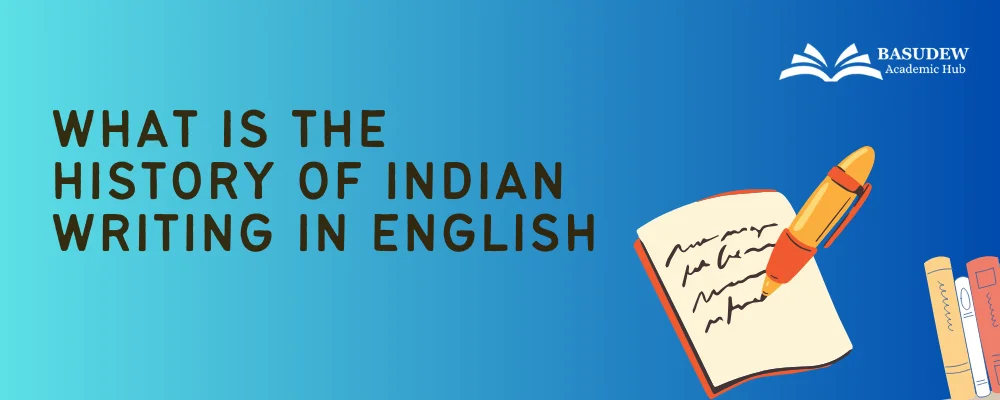Indian writing in English is a rich and dynamic tradition that reflects the diverse and complex history of India itself. From its colonial beginnings to its global prominence today, Indian literature in English has evolved through various phases, each marked by significant contributions from writers who have shaped the literary landscape. Here, we trace the comprehensive history of Indian writing in English.
What is Indian English Literature?
Indian English Literature refers to the body of work written by Indian authors in the English language. This literature started gaining prominence during the British colonial period and has grown significantly since India’s independence. It includes a variety of genres like novels, short stories, poetry, and plays.
Early Indian English writers, such as R.K. Narayan and Mulk Raj Anand, focused on depicting the social and cultural life of India. They highlighted issues like poverty, caste discrimination, and the struggle for independence. Later, writers like Salman Rushdie, Arundhati Roy, and Jhumpa Lahiri gained international recognition, bringing global attention to Indian English Literature.
These authors often explore themes like identity, migration, and the clash between tradition and modernity. Their works reflect the diverse experiences of Indians both within the country and in the diaspora.
Indian English Literature is important because it provides a unique perspective on Indian life, combining local traditions with global influences. It has become a significant part of world literature, showcasing the richness and complexity of Indian culture and society to a global audience.
Time Periods of Indian English Literature
| Time Period | Characteristics | Vital Authors |
| Early Period (19th Century) | Beginnings of English writing in India; influenced by British colonial rule; themes of social reform and nationalism. | Henry Louis Vivian Derozio, Toru Dutt |
| Pre-Independence (1900-1947) | Focus on social issues, freedom struggle, and cultural identity; blending Indian themes with Western literary forms. | R.K. Narayan, Mulk Raj Anand, Raja Rao |
| Post-Independence (1947-1980) | Exploration of new national identity, partition, social change; greater diversity in themes and styles. | Kamala Markandaya, Khushwant Singh, Anita Desai |
| Contemporary Period (1980s-Present) | Globalization of Indian literature; diaspora experiences, post-colonial themes; use of English as a global language. | Salman Rushdie, Arundhati Roy, Jhumpa Lahiri, Vikram Seth |
History of Indian Writing in English
Early Beginnings (19th Century)
The history of Indian writing in English begins in the early 19th century during British colonial rule. English education was introduced in India by the British, and as Indians learned the language, some began to write in it.
Notable Early Writers:
- Henry Louis Vivian Derozio: Often regarded as the first Indian English poet, Derozio’s work reflected his mixed heritage and his admiration for Western literary forms.
- Toru Dutt: A pioneering woman writer, Dutt’s poetry and prose displayed deep knowledge of both Indian and Western traditions. Her works, such as “A Sheaf Gleaned in French Fields,” were significant in introducing Indian themes to a Western audience.
Pre-Independence Period (1900-1947)
As the struggle for independence from British rule intensified, literature became a powerful medium for expressing nationalistic sentiments and exploring social issues. Writers during this period often highlighted themes such as the fight for freedom, social reform, and cultural identity.
Key Figures:
- R.K. Narayan: Known for his Malgudi series, Narayan depicted everyday life in a fictional South Indian town. His simple, yet profound storytelling made him one of India’s most beloved writers.
- Mulk Raj Anand: His novels, like “Untouchable” and “Coolie,” focused on the lives of the oppressed and the marginalized, addressing issues like caste discrimination and poverty.
- Raja Rao: “Kanthapura,” his most famous work, is a novel that portrays the impact of Gandhi’s ideas on a small South Indian village. Rao’s narrative style incorporated Indian oral traditions into English prose.
Post-Independence Period (1947-1980)
After India gained independence in 1947, Indian English literature entered a new phase. Writers began to explore themes related to the newly formed nation, such as the partition, national identity, and social change.
Important Authors:
- Kamala Markandaya: Her novel “Nectar in a Sieve” is a poignant portrayal of rural life in India and the struggles faced by farmers.
- Khushwant Singh: His novel “Train to Pakistan” is a gripping account of the partition of India, depicting the horror and human tragedy of the event.
- Anita Desai: Known for her psychological insights, Desai’s works often delve into the inner lives of her characters. “Cry, the Peacock” and “Clear Light of Day” are notable examples.
Contemporary Period (1980s-Present)
The 1980s marked the beginning of a global recognition of Indian English literature. With the publication of Salman Rushdie’s “Midnight’s Children” in 1981, Indian writing in English gained international acclaim. This period saw a rise in themes related to post-colonialism, diaspora, globalization, and the blending of Indian and Western cultures.
Prominent Contemporary Authors:
- Salman Rushdie: “Midnight’s Children,” a novel that won the Booker Prize, is a magical realist narrative of India’s transition from British colonialism to independence. Rushdie’s innovative use of language and narrative techniques set a new standard for Indian English literature.
- Arundhati Roy: Her debut novel “The God of Small Things” won the Booker Prize in 1997. It is a richly textured story set in Kerala, dealing with themes of love, caste, and politics.
- Jhumpa Lahiri: An author of Indian descent living in the US, Lahiri’s works, like “The Namesake” and “Interpreter of Maladies,” explore the experiences of Indian immigrants and the complexities of identity and belonging.
- Vikram Seth: His epic novel “A Suitable Boy” is one of the longest novels ever published in a single volume in the English language. It intricately weaves together personal and political stories in post-independence India.
Themes and Styles
Indian English literature is characterized by its rich diversity of themes and styles, reflecting the country’s complex social and cultural fabric. Some recurring themes include:
- Identity and Self-Discovery: Many Indian English writers explore questions of personal and national identity. This includes the struggle to reconcile traditional Indian values with modern, often Western, influences.
- Social Issues: Issues like caste discrimination, gender inequality, and poverty are frequently addressed. Writers use their works to critique and bring awareness to these problems.
- Diaspora and Migration: The experiences of Indians living abroad and the sense of displacement and cultural conflict are common themes. This is especially evident in the works of writers like Jhumpa Lahiri and Bharati Mukherjee.
- Historical and Political Contexts: Events like the partition of India, the Emergency period, and the impact of colonialism are often central to the narratives.
Stylistically, Indian English literature blends traditional Indian storytelling techniques with Western literary forms. This fusion results in a unique narrative style that includes elements like:
- Magical Realism: Popularized by Salman Rushdie, this style incorporates fantastical elements into realistic settings.
- Stream of Consciousness: Used effectively by writers like Anita Desai, this technique explores the inner thoughts and feelings of characters.
- Non-linear Narratives: Many contemporary writers, including Arundhati Roy, employ non-linear storytelling to reflect the complexity of their themes.
Impact and Global Recognition
The global success of Indian English literature has had several significant impacts:
- Increased Visibility: Indian writers have gained international recognition, and their works are widely read and studied around the world.
- Cultural Exchange: The literature provides insights into Indian culture and society, fostering greater understanding and appreciation among global readers.
- Diverse Voices: Indian English literature showcases the diverse voices and experiences of India, challenging stereotypes and broadening the literary landscape.
Challenges and Criticisms
Despite its successes, Indian English literature faces some challenges and criticisms:
- Language Debate: There is an ongoing debate about the use of English in Indian literature. Some critics argue that writing in English caters to a Western audience and overlooks India’s regional languages and literatures.
- Representation: While Indian English literature includes a wide range of voices, there are concerns about the representation of marginalized communities and the dominance of certain narratives over others.
- Commercialization: The global success of Indian writers sometimes leads to pressures of commercialization, where market demands can influence the themes and styles of literary works.
Conclusion
Indian English literature has a rich and dynamic history, evolving from its early beginnings during British colonial rule to its current status as a globally recognized and respected body of work. It reflects the complexities of Indian society and culture, addressing a wide range of themes and employing diverse styles. The contributions of Indian English writers have not only enriched world literature but also provided valuable perspectives on the human condition.
As the literary landscape continues to evolve, Indian English literature remains a vibrant and important field, bridging cultures and fostering dialogue through the power of the written word. Its future promises further exploration of new themes and innovative narrative techniques, ensuring its continued relevance and impact in the global literary arena.
Importance of English Literature in India

The importance of English literature in India cannot be overstated, as it plays a multifaceted role in the country’s educational, cultural, social, and intellectual landscapes. Here are several key reasons highlighting its significance:
Historical Significance
English literature holds a significant place in India due to its historical context. Introduced during British colonial rule, English education became a means for Indians to engage with Western ideas, science, and philosophy. This era saw the emergence of Indian writers who used English to express their thoughts on social reform, independence, and identity. These early contributions laid the foundation for English literature’s importance in India.
Cultural Bridge
English literature serves as a cultural bridge between India and the rest of the world. By writing in English, Indian authors can reach a global audience, sharing the richness of Indian culture, traditions, and social issues with people across the world. This exchange of ideas helps in fostering understanding and appreciation between different cultures.
National Identity and Social Issues
Indian English literature has played a crucial role in shaping and reflecting the national identity. Authors like R.K. Narayan, Mulk Raj Anand, and Khushwant Singh have depicted the lives, struggles, and aspirations of ordinary Indians, contributing to a sense of national consciousness. Their works often address social issues such as caste discrimination, poverty, and gender inequality, encouraging readers to think critically about these problems.
Educational Value
English literature is an integral part of the Indian education system. Studying literature helps students develop critical thinking, empathy, and a deeper understanding of human experiences. It enhances language skills, broadening vocabulary, and improving comprehension and communication abilities. Through literature, students learn about historical contexts, cultural diversity, and different perspectives, enriching their educational experience.
Global Recognition
Indian English writers have achieved significant global recognition, winning prestigious awards and accolades. Authors like Salman Rushdie, Arundhati Roy, and Jhumpa Lahiri have brought international attention to Indian literature, showcasing its quality and diversity. Their success has inspired many aspiring writers in India, demonstrating that Indian stories and voices can resonate worldwide.
Diverse Themes and Styles
Indian English literature is known for its diversity in themes and styles, reflecting the complexity of Indian society. Some recurring themes include:
- Identity and Self-Discovery: Writers explore questions of personal and national identity, often addressing the conflict between traditional values and modern influences.
- Social Issues: Literature serves as a platform to discuss pressing social problems such as caste discrimination, gender inequality, and economic disparity.
- Diaspora and Migration: The experiences of Indians living abroad, their struggles with identity, and the sense of belonging are common themes.
- Historical and Political Contexts: Events like the partition, independence, and political changes are central to many narratives, providing insight into India’s historical and political landscape.
Stylistically, Indian English literature blends traditional Indian storytelling techniques with Western literary forms, resulting in a unique and rich narrative style.
Economic and Professional Opportunities
The importance of English literature in India also extends to economic and professional opportunities. Proficiency in English is often seen as a key to better job prospects, especially in sectors like information technology, business, and academia. A good command of English can open doors to international markets, higher education opportunities, and global collaborations.
Media and Entertainment
English literature influences Indian media and entertainment, including films, television, and theater. Many Indian films and TV shows are adaptations of literary works, bringing stories from the pages of books to the screen. This cross-pollination between literature and other forms of entertainment enriches the cultural landscape and makes literature more accessible to the general public.
Fostering Creativity and Imagination
Reading and writing literature fosters creativity and imagination. It allows individuals to explore different worlds, ideas, and perspectives, stimulating intellectual curiosity and innovative thinking. For writers, literature provides a medium to express their thoughts, experiences, and emotions creatively.
Preservation of Heritage and Language
While English literature is a means to engage with global audiences, it also helps in preserving and promoting India’s linguistic heritage. Many Indian writers incorporate regional languages, dialects, and cultural references into their English works, showcasing the diversity and richness of India’s linguistic landscape. This blend of languages within literature helps preserve regional identities while making them accessible to a broader audience.
Promoting Critical Thinking and Empathy
Literature encourages readers to think critically about the world around them. By engaging with different characters, situations, and moral dilemmas, readers develop empathy and a deeper understanding of human nature. This ability to see the world from multiple perspectives is crucial in a diverse and complex society like India.
Conclusion
In summary, the importance of English literature in India is multifaceted. It serves as a historical record, a cultural bridge, and a platform for discussing social issues. It enriches education, fosters creativity, and opens up economic opportunities. Through diverse themes and styles, it reflects the complexity of Indian society and helps in preserving linguistic and cultural heritage. By promoting critical thinking and empathy, literature plays a vital role in shaping a more informed, compassionate, and culturally aware society. The impact of Indian English literature extends beyond national boundaries, contributing significantly to the global literary landscape.
Role of Women Authors in Indian English Literature
The role of women authors in Indian English literature is profound and transformative. These authors have significantly contributed to shaping the literary landscape, bringing diverse perspectives, challenging societal norms, and addressing a wide array of issues. Here’s an exploration of the role and impact of women authors in Indian English literature:
Early Pioneers
The role of women authors in Indian English literature has been pivotal in shaping the literary landscape of the country. Despite societal challenges and limited access to education, several pioneering women writers emerged in the 19th and early 20th centuries, laying the groundwork for future generations.
Notable Early Authors:
- Toru Dutt: Often hailed as one of the first Indian women to write in English, Toru Dutt’s works like “A Sheaf Gleaned in French Fields” and “Ancient Ballads and Legends of Hindustan” showcase her deep engagement with Indian mythology and her exceptional command over the English language.
- Sarojini Naidu: Known as the “Nightingale of India,” Naidu was a poet and a prominent freedom fighter. Her poetry, such as in collections like “The Golden Threshold,” reflects themes of love, nature, and patriotism. Naidu’s work played a crucial role in bringing Indian themes to a global audience.
Mid 20th Century: Voices of Change
As India moved towards independence and the subsequent formation of a new nation, women writers began to explore a wider array of themes, including identity, social issues, and personal freedom. Their works provided a critical examination of the changing societal landscape.
Key Figures:
- Kamala Das: A prolific poet and author, Das’s work is known for its bold exploration of female sexuality and identity. Her autobiography, “My Story,” and poetry collections like “Summer in Calcutta” provide a candid look at her life and the experiences of women in a conservative society.
- Ruth Prawer Jhabvala: Although of German-Jewish origin, Jhabvala’s extensive work in Indian English literature, particularly through novels like “Heat and Dust” and her collaborations with filmmakers like Merchant-Ivory, offers an insightful portrayal of Indian life and the complexities of cross-cultural interactions.
Post-Independence Era: Expanding Horizons
The post-independence era saw an increase in the number of women writers who began to gain prominence. Their works often delved into the themes of independence, identity, and the evolving role of women in Indian society.
Prominent Authors:
- Anita Desai: Known for her psychological insight and depth, Desai’s novels, such as “Clear Light of Day” and “Cry, the Peacock,” explore the inner lives of her characters, particularly women, and their struggles with societal expectations and personal desires.
- Nayantara Sahgal: As a member of the Nehru-Gandhi family, Sahgal’s works often address political themes and the dynamics of power. Her novel “Rich Like Us” critically examines the Emergency period in India, blending political discourse with personal narratives.
- Shashi Deshpande: Her works, including “That Long Silence” and “The Binding Vine,” focus on the lives of middle-class Indian women, exploring their struggles for autonomy and self-expression within the constraints of traditional societal norms.
Contemporary Voices: Diverse and Dynamic
In recent decades, the landscape of Indian English literature has been enriched by a new generation of women writers who bring diverse perspectives and tackle contemporary issues. These writers have gained international acclaim and have expanded the thematic and stylistic boundaries of Indian literature.
Notable Contemporary Authors:
- Arundhati Roy: Her debut novel, “The God of Small Things,” won the Booker Prize in 1997. Roy’s work explores themes of forbidden love, social discrimination, and political corruption. Her distinctive narrative style and deep social commentary have made her a significant voice in contemporary literature.
- Jhumpa Lahiri: An author of Indian descent based in the United States, Lahiri’s works like “The Namesake” and “Interpreter of Maladies” delve into the experiences of Indian immigrants, identity, and the sense of belonging. Her lucid prose and evocative storytelling have garnered widespread acclaim.
- Kiran Desai: Winner of the Man Booker Prize for her novel “The Inheritance of Loss,” Desai’s work explores themes of globalization, migration, and the clash between tradition and modernity. Her richly textured narratives highlight the complexities of contemporary Indian life.
- Chitra Banerjee Divakaruni: Known for her novels and short stories that often feature strong female protagonists, Divakaruni’s works like “The Palace of Illusions” and “Sister of My Heart” reinterpret Indian myths and explore women’s lives, aspirations, and struggles.
Themes Explored by Women Writers
Women authors in Indian English literature have significantly enriched the literary canon by addressing a broad spectrum of themes.
- Gender and Identity: Many women writers explore the complexities of gender roles and identity. They often challenge traditional norms and highlight the struggles and resilience of women in a patriarchal society. Works by Kamala Das and Shashi Deshpande are notable for their focus on women’s inner lives and societal constraints.
- Social and Political Issues: Women authors frequently engage with pressing social and political issues. For instance, Arundhati Roy and Nayantara Sahgal have used their narratives to critique political systems and social injustices, offering powerful commentaries on the state of the nation.
- Diaspora and Migration: The experiences of the Indian diaspora and the challenges of migration are recurrent themes. Jhumpa Lahiri’s exploration of immigrant life and Kiran Desai’s portrayal of globalization’s impact offer deep insights into the diasporic identity and cultural dislocation.
- Myth and Tradition: Many contemporary women writers draw on Indian mythology and tradition, reinterpreting ancient stories to highlight contemporary issues. Chitra Banerjee Divakaruni’s retellings of epic tales from female perspectives provide fresh and empowering viewpoints.
Impact and Recognition
The contributions of women authors in Indian English literature have had a profound impact on both national and international literary landscapes. Their works have received prestigious awards, including the Booker Prize and the Sahitya Akademi Award, bringing global recognition to Indian literature. More importantly, they have given voice to women’s experiences and perspectives, challenging societal norms and advocating for greater equality and justice.
Conclusion
The role of women authors in Indian English literature is vast and multifaceted. From early pioneers like Toru Dutt and Sarojini Naidu to contemporary voices like Arundhati Roy and Jhumpa Lahiri, women writers have continually enriched the literary scene with their diverse narratives and powerful themes. They have tackled issues of gender, identity, social justice, and tradition, offering unique insights and challenging readers to rethink societal norms. Their contributions have not only shaped Indian literature but have also left an indelible mark on the global literary world, demonstrating the power of women’s voices in storytelling.
Contribution of “Mulk Raj Anand” in Indian English Literature
Mulk Raj Anand is one of the most important figures in Indian English literature. Born on December 12, 1905, in Peshawar (now in Pakistan), Anand’s work has had a profound impact on the development of Indian English writing. His novels and short stories brought attention to social issues, focusing on the lives of the poor and oppressed in India. Here’s a look at his significant contributions:
Champion of the Underprivileged
Anand’s writing primarily focused on the lives of the marginalized and the downtrodden. He wrote about the struggles of the common man, highlighting their pain, suffering, and aspirations. His stories gave a voice to those who were often ignored in literature.
- “Untouchable” (1935): This is one of his most famous works. The novel tells the story of a day in the life of Bakha, a young sweeper who belongs to the untouchable caste. Through Bakha’s experiences, Anand exposes the harsh realities of the caste system and the deep-rooted social discrimination faced by the untouchables. This book is considered a classic and is still widely read and studied.
- “Coolie” (1936): Another significant work, “Coolie” follows the life of Munoo, a young boy who leaves his village to work in various parts of India. The novel portrays the exploitation and hardships faced by laborers, capturing the social and economic inequalities of the time.
Realism and Social Reform
Anand’s writing style is characterized by its realism and commitment to social reform. He was not just a storyteller but also a social commentator who used his writing to advocate for change.
- Realistic Depictions: Anand’s novels are known for their realistic portrayal of Indian society. He didn’t shy away from showing the harsh truths of life, whether it was the oppression of the lower castes, the struggles of the working class, or the impact of colonial rule.
- Social Justice: His works often contained a call for social justice and reform. Anand believed in the power of literature to bring about change, and he used his stories to highlight the need for equality and human dignity.
Literary Style and Language
Anand was a master of blending Indian themes with English literary forms. He brought the richness of Indian culture into his English writing, creating a unique and authentic voice.
- Use of Vernacular: He incorporated Indian words, phrases, and expressions into his English prose, giving his writing an Indian flavor. This use of vernacular made his characters and settings more relatable and authentic to Indian readers.
- Characterization: Anand’s characters are vividly drawn and deeply human. He created memorable and realistic characters who reflected the diversity and complexity of Indian society.
Influence and Legacy
Mulk Raj Anand’s contributions to Indian English literature are immense. He was one of the pioneers who helped establish a distinct Indian voice in English writing.
- Inspiration to Others: Anand’s success paved the way for other Indian writers to write in English. He showed that Indian themes and stories could be effectively conveyed in the English language, encouraging a generation of writers to explore their own narratives.
- Critical Acclaim: His works received critical acclaim both in India and abroad. He won numerous awards, including the Sahitya Akademi Award in 1971 for his novel “Morning Face.”
Final Thoughts
Mulk Raj Anand’s legacy in Indian English literature is enduring. Through his powerful storytelling and commitment to social justice, he brought attention to important social issues and gave a voice to the marginalized. His realistic depictions of Indian life, combined with his innovative use of language, have left a lasting impact on the literary world. Anand’s work continues to be celebrated for its contribution to literature and its role in advocating for a more just and equitable society.
Contribution of “Raja Rao” in English Literature in India
Raja Rao is one of the most celebrated figures in Indian English literature. Born on November 8, 1908, in Hassan, Karnataka, his work has significantly shaped the way Indian culture and philosophy are presented in English. Raja Rao’s contributions have helped to create a unique Indian voice in English literature, bringing attention to Indian themes and stories on a global platform.
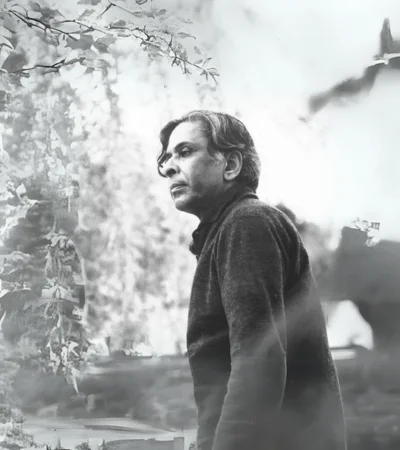
Pioneer of Indian English Literature
Raja Rao is considered one of the pioneering figures in Indian English literature. Alongside Mulk Raj Anand and R.K. Narayan, he formed a trio that laid the foundation for future generations of Indian writers in English. His writing is known for its deep philosophical insights and its exploration of Indian traditions and culture.
Major Works
Raja Rao’s most famous works include “Kanthapura” and “The Serpent and the Rope,” both of which are essential readings in Indian literature.
- “Kanthapura” (1938): This novel is one of Rao’s most celebrated works. It tells the story of a small village in South India and its involvement in the Indian independence movement. Through the eyes of an old woman named Achakka, Rao depicts the impact of Gandhi’s ideals on ordinary villagers. The novel is known for its unique narrative style, which blends traditional Indian oral storytelling with English prose. This made it accessible and engaging for both Indian and international readers.
- “The Serpent and the Rope” (1960): This novel is a semi-autobiographical work that explores themes of spirituality, self-discovery, and the clash between Eastern and Western philosophies. It follows the journey of a young Indian man named Ramaswamy, who travels to Europe in search of knowledge and understanding. The novel is rich in philosophical discourse and reflects Rao’s deep interest in Indian philosophy and metaphysics.
Blending Indian Culture with English Prose
Raja Rao’s writing is distinguished by his ability to seamlessly blend Indian cultural elements with English literary forms. He incorporated Indian philosophies, myths, and folklore into his narratives, giving his work a distinct Indian essence while writing in English. This helped to create a bridge between Indian and Western literary traditions.
- Language and Style: Rao’s use of language is innovative and unique. He often used Indian idioms, expressions, and rhythmic patterns in his English prose, creating a new style that resonated with Indian readers and introduced global readers to Indian cultural nuances.
- Philosophical Depth: His works are known for their philosophical depth. Rao was deeply influenced by Indian spiritual traditions and this is evident in his writing. His exploration of themes like identity, self-realization, and the nature of reality adds a profound layer to his narratives.
Influence and Legacy
Raja Rao’s contributions have had a lasting impact on Indian English literature. His work paved the way for future Indian writers to express their cultural identity and experiences in English. He demonstrated that Indian themes and stories could be effectively and authentically conveyed in the English language.
- Inspiration to Writers: Rao’s success inspired many Indian writers to explore their own cultural heritage and present it to a global audience. Authors like Salman Rushdie and Arundhati Roy have acknowledged the influence of early pioneers like Rao in shaping their literary journeys.
- Recognition and Awards: Raja Rao received numerous accolades for his work, including the Sahitya Akademi Award and the Padma Bhushan, one of India’s highest civilian honors.
Conclusion
Raja Rao’s contribution to Indian English literature is immense. Through his innovative narrative techniques and deep philosophical insights, he brought Indian culture and stories to the forefront of global literature. His works remain influential and continue to inspire readers and writers around the world. By blending Indian traditions with English prose, Raja Rao helped to create a distinctive voice in literature that celebrates the richness of Indian heritage.
Rabindranath Tagore: a Poet and Novelist
Rabindranath Tagore, born on May 7, 1861, in Kolkata, India, is one of the most influential figures in Indian literature and culture. He was a poet, novelist, musician, and artist, whose work has left a lasting legacy not just in India but around the world. Tagore’s contributions as a poet and novelist are particularly noteworthy, as they reflect his deep understanding of human emotions, social issues, and the beauty of nature.

Tagore as a Poet
Rabindranath Tagore’s poetry is celebrated for its lyrical beauty, profound depth, and universal appeal. He wrote extensively in Bengali, but many of his works have been translated into English, allowing his thoughts and emotions to reach a global audience.
Gitanjali: Tagore’s most famous collection of poems is “Gitanjali” (Song Offerings), which earned him the Nobel Prize in Literature in 1913. “Gitanjali” is a series of poems that explore themes of spirituality, the divine, and human connection with nature. The poems are simple yet deeply philosophical, reflecting Tagore’s belief in the unity of all creation. The opening lines of one of the poems, “Where the mind is without fear and the head is held high,” have inspired many with their call for freedom and self-respect.
Nature and Human Emotions: Tagore’s poetry often draws inspiration from nature. He saw nature as a source of beauty and spiritual nourishment. Poems like “The Gardener” and “Fruit-Gathering” depict the intimate relationship between humans and nature, highlighting how natural elements mirror human emotions and experiences. His work captures the fleeting beauty of seasons, the joy of spring, and the melancholy of autumn, bringing the reader closer to the natural world.
Social and Political Themes: Tagore was also a keen observer of social issues. His poetry addresses themes like freedom, nationalism, and social justice. He was a critic of colonialism and advocated for India’s independence through his writing. Despite his patriotic fervor, Tagore’s vision was always inclusive and universal, emphasizing the importance of global unity and peace.
Tagore as a Novelist
Rabindranath Tagore’s contributions as a novelist are equally significant. His novels often delve into social issues, personal conflicts, and the complexities of human relationships. Through his storytelling, Tagore painted a vivid picture of Indian society and its challenges.
“Gora”: One of Tagore’s most important novels is “Gora.” This novel explores themes of identity, religion, and nationalism. The protagonist, Gora, is an orthodox Hindu who undergoes a profound transformation as he questions his beliefs and discovers his true identity. The novel examines the tensions between tradition and modernity, and between different religious communities in India.
“The Home and the World”: Another notable work is “The Home and the World” (Ghare Baire). This novel is set during the Swadeshi movement, which aimed to promote Indian goods and boycott British products. The story revolves around a love triangle between Bimala, her husband Nikhil, and the revolutionary Sandip. Through this personal story, Tagore explores the impact of political movements on individual lives, and the moral dilemmas faced by those involved in the struggle for independence.
“Chokher Bali”: “Chokher Bali” (A Grain of Sand) is a novel that deals with the lives of women in a patriarchal society. The story centers on Binodini, a young widow, and her complex relationships with the people around her. The novel addresses issues like widowhood, female desire, and social norms, highlighting the struggles and resilience of women.
Tagore’s Writing Style
Tagore’s writing is characterized by its elegance, clarity, and emotional depth. He had a remarkable ability to express complex thoughts and feelings in simple, beautiful language. Whether in poetry or prose, his work resonates with readers because of its sincerity and universality.
Language and Imagery: Tagore’s use of language is both lyrical and evocative. His imagery is rich and vivid, often drawing on natural elements to convey deeper meanings. This ability to create powerful visual and emotional experiences is a hallmark of his style.
Philosophical Insights: Tagore’s works are imbued with philosophical insights. He drew inspiration from various sources, including Indian philosophy, Western literature, and his own spiritual experiences. His writings reflect a deep contemplation of life, love, death, and the divine.
Conclusion
Rabindranath Tagore’s contributions as a poet and novelist have had a profound impact on Indian literature and beyond. His poetry, with its lyrical beauty and spiritual depth, has touched the hearts of readers worldwide. His novels, rich in social commentary and human emotion, provide a window into the complexities of Indian society. Through his work, Tagore has left an indelible mark on the literary world, inspiring generations of readers and writers to explore the depths of human experience and the beauty of the natural world. His legacy continues to shine brightly, reminding us of the power of words to transform and uplift the human spirit.
R. K. Narayan: a Novelist and Short Story Writer
R. K. Narayan, born on October 10, 1906, in Chennai, India, is one of the most beloved writers in Indian English literature. He is renowned for his novels and short stories that capture the essence of everyday life in India. Narayan’s writing is known for its simplicity, humor, and keen observation of human nature. He brought to life a fictional town called Malgudi, where many of his stories are set, creating a rich and vivid world that readers can easily relate to.
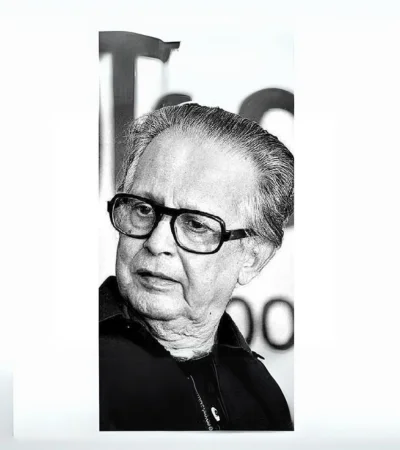
Novelist
R. K. Narayan’s novels are celebrated for their portrayal of ordinary people and their daily struggles. His stories are set in the fictional town of Malgudi, which feels real and familiar to readers.
“Swami and Friends” (1935): This is Narayan’s first novel and one of his most famous works. It tells the story of Swaminathan, a young boy living in Malgudi, and his adventures with his friends. The novel beautifully captures the innocence and mischief of childhood, making it a timeless read for people of all ages.
“The Bachelor of Arts” (1937): This novel follows the life of Chandran, a young man navigating the challenges of college life, love, and the expectations of society. Narayan’s depiction of Chandran’s journey from youth to adulthood is both humorous and touching, reflecting the universal experiences of growing up.
“The Guide” (1958): One of Narayan’s most acclaimed novels, “The Guide” tells the story of Raju, a tour guide who becomes a spiritual guide by accident. The novel explores themes of identity, transformation, and redemption. It was later adapted into a successful film, further cementing Narayan’s reputation as a master storyteller.
Short Story Writer
Narayan’s short stories are equally impactful, known for their wit, charm, and insightful observations of human nature. He often focused on the small moments of life, turning them into profound reflections.
“Malgudi Days” (1942): This collection of short stories is one of Narayan’s most beloved works. Each story is set in the fictional town of Malgudi and features a variety of characters, from schoolboys to shopkeepers. The stories are simple yet powerful, highlighting the beauty and complexity of everyday life.
“An Astrologer’s Day”: This is one of the most famous stories from “Malgudi Days.” It tells the story of an astrologer who, through a twist of fate, encounters a man from his past. The story is a brilliant example of Narayan’s skill in blending humor with deep insight into human nature.
Writing Style
R. K. Narayan’s writing is characterized by its simplicity and clarity. He had a unique ability to make the ordinary extraordinary, focusing on the small details of life that often go unnoticed.
Humor and Wit: Narayan’s stories are filled with gentle humor and wit. He had a keen eye for the quirks and idiosyncrasies of people, which he portrayed with warmth and affection.
Universal Themes: Despite being deeply rooted in Indian culture, Narayan’s stories address universal themes like love, friendship, ambition, and the passage of time. This has made his work accessible and relatable to readers worldwide.
Conclusion
R. K. Narayan’s contributions to literature are immense. Through his novels and short stories, he created a world that is both uniquely Indian and universally human. His ability to capture the essence of everyday life with humor, warmth, and keen observation has endeared him to readers across generations. Narayan’s work continues to be celebrated for its simplicity, depth, and timeless appeal, making him one of the most cherished writers in Indian English literature.
Kamala Das: The First Poet of Indian English Literature
Kamala Das, also known as Madhavikutty, was a prominent Indian poet who wrote in both English and Malayalam. Born on March 31, 1934, in Punnayurkulam, Kerala, she became one of the most significant voices in Indian literature. Kamala Das is celebrated for her bold and honest writing, which explores themes of love, sexuality, and women’s struggles in a patriarchal society.

Early Life and Background
Kamala Das was born into a literary family. Her mother, Balamani Amma, was a famous Malayalam poet, and her father, V.M. Nair, was a well-known journalist. This literary environment influenced Kamala greatly. She started writing poetry at a young age and was encouraged to pursue her passion for literature.
Writing Style and Themes
Kamala Das’s writing is known for its emotional intensity and straightforwardness. She did not shy away from discussing personal and often taboo topics like female sexuality and desire. Her poetry often reflects her personal experiences, struggles, and the complexities of being a woman in India.
One of her most famous works is the poetry collection “Summer in Calcutta,” published in 1965. This book brought her instant recognition and established her as a powerful voice in Indian English literature. Her poems in this collection are marked by their candidness and emotional depth.
Major Works
Apart from “Summer in Calcutta,” Kamala Das wrote several other notable works. Her autobiography, “My Story,” published in 1976, is considered one of her most controversial and revealing works. In this book, she openly discusses her life, including her marriage, extramarital affairs, and quest for love and identity. “My Story” was initially published in Malayalam as “Ente Katha” and later translated into English.
Her other poetry collections include “The Descendants” (1967), “The Old Playhouse and Other Poems” (1973), and “Only the Soul Knows How to Sing” (1996). These works further showcase her poetic talent and her ability to touch readers with her honest expressions.
Contribution
Kamala Das’s contributions to Indian literature have left a lasting impact. She was one of the first Indian women writers to write so openly about women’s issues, challenging societal norms and expectations. Her fearless writing inspired many future generations of poets and writers, especially women, to express themselves freely.
In recognition of her contributions, Kamala Das received numerous awards, including the Sahitya Akademi Award and the Asian Poetry Prize. She passed away on May 31, 2009, but her legacy lives on through her powerful and evocative writing.
Kamala Das remains a pioneering figure in Indian English literature, remembered for her courage, honesty, and the unique voice she brought to poetry. Her work continues to resonate with readers, offering a profound look into the human heart and the female experience.
Toru Dutt: A Pioneer of Indian Poetry
Toru Dutt was an important figure in Indian literature, recognized for her significant contributions to poetry. Born on March 4, 1856, in Kolkata (formerly Calcutta), she was part of a Bengali Christian family that valued education and literary pursuits. Despite her short life, she made a lasting impact on Indian English literature and French literature.
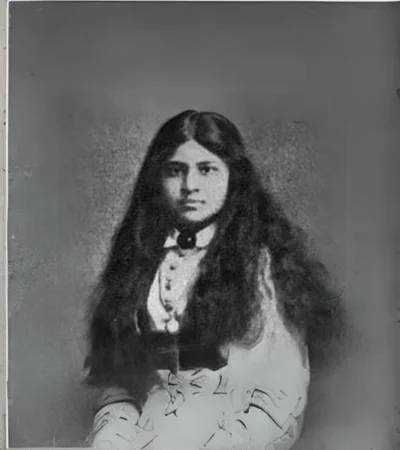
Early Life and Education
Toru Dutt was the youngest of three children. Her family was well-educated and progressive for their time. Her father, Govin Chunder Dutt, was a linguist and a poet. Toru’s early education took place at home, where she learned several languages, including English, Bengali, and French. This multilingual ability greatly influenced her literary works.
In 1869, the Dutt family moved to Europe, where Toru continued her education. She attended schools in France and England, which exposed her to Western literature and culture. This experience broadened her horizons and deepened her appreciation for poetry.
Literary Career
Toru Dutt started writing poetry at a young age. Her work is noted for its emotional depth, vivid imagery, and blend of Indian themes with Western literary styles. She wrote poems in both English and French, showcasing her remarkable linguistic skills.
Her first significant publication was a collection of French poems titled “A Sheaf Gleaned in French Fields” (1876), which she translated into English. This work consisted of translations of French poems by well-known poets such as Victor Hugo and Alphonse de Lamartine. It received praise for its accuracy and poetic beauty.
Major Works
One of Toru Dutt’s most celebrated works is the poetry collection “Ancient Ballads and Legends of Hindustan,” published posthumously in 1882. This collection includes poems inspired by Indian mythology and legends, such as “Savitri” and “Lakshman.” Her ability to blend Indian folklore with the English language made these poems unique and appealing to a broad audience.
Another important work is her unfinished novel, “Bianca, or The Young Spanish Maiden.” Although incomplete, it reflects her interest in storytelling and her ability to create vivid characters and settings.
Legacy
Toru Dutt’s life was tragically short; she died of tuberculosis on August 30, 1877, at the age of 21. Despite her brief career, she left a significant mark on Indian literature. She is often regarded as one of the earliest Indian poets to write extensively in English, paving the way for future generations of Indian writers.
Her work is celebrated for its pioneering spirit and its bridging of Eastern and Western literary traditions. Toru Dutt’s poetry continues to be studied and admired for its lyrical beauty and cultural richness.
In summary, Toru Dutt was a remarkable poet whose contributions to Indian literature are still appreciated today. Her ability to weave Indian themes with Western literary forms and her proficiency in multiple languages make her a unique and influential figure in the world of poetry. Her legacy lives on as an inspiration to many aspiring writers and poets in India and beyond.
Sarojini Naidu: A Poet and Indian Activist
Sarojini Naidu, often known as the “Nightingale of India,” was a remarkable poet and a passionate freedom fighter. Born on February 13, 1879, in Hyderabad, India, she became one of the most prominent figures in India’s struggle for independence and made significant contributions to Indian literature.
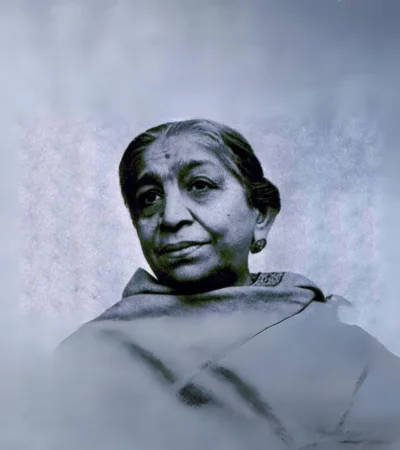
Early Life and Education
Sarojini Naidu was born into a well-educated and progressive family. Her father, Aghorenath Chattopadhyay, was a scientist and educator, and her mother, Varada Sundari Devi, was a poet. Sarojini was the eldest of eight siblings, all of whom were encouraged to pursue education and intellectual growth.
At a young age, Sarojini showed a talent for poetry. She wrote her first poem at the age of 12. Recognizing her talent, her father encouraged her to continue writing. Sarojini’s education took her to England, where she attended King’s College London and later Girton College, Cambridge. This exposure to Western literature and culture greatly influenced her writing style.
Literary Career
Sarojini Naidu’s poetry is known for its lyrical quality and rich imagery. Her poems often celebrate Indian culture and traditions, using themes of nature, love, and patriotism. Some of her most famous poetry collections include “The Golden Threshold” (1905), “The Bird of Time” (1912), and “The Broken Wing” (1917).
Her poem “In the Bazaars of Hyderabad” is particularly well-known for its vivid descriptions of an Indian marketplace, capturing the sights, sounds, and smells of a bustling bazaar. Another notable poem, “Palanquin Bearers,” beautifully depicts the traditional Indian practice of carrying brides in palanquins, showcasing her ability to bring Indian customs to life through her words.
Political Career and Activism
While Sarojini Naidu gained fame as a poet, her contributions to India’s freedom struggle are equally significant. She was deeply inspired by the works and principles of Mahatma Gandhi and joined the Indian National Congress, becoming an active participant in the fight for independence.
Sarojini Naidu traveled across India, delivering speeches and inspiring people to join the movement. She was a strong advocate for women’s rights and played a key role in the Women’s Indian Association, which worked towards women’s suffrage and social reform.
In 1925, she became the first woman to preside over the Indian National Congress, a testament to her leadership and dedication. She was also arrested several times for her involvement in the independence movement, including during the Salt March in 1930.
After India gained independence in 1947, Sarojini Naidu was appointed the first female governor of an Indian state, serving as the Governor of Uttar Pradesh. She continued to work for the betterment of the country until her death on March 2, 1949.
Legacy
Sarojini Naidu’s legacy is multifaceted. As a poet, she enriched Indian literature with her beautiful verses, celebrating India’s cultural heritage. Her poetry remains popular and continues to inspire readers with its lyrical beauty and emotional depth.
As a freedom fighter, she played a crucial role in mobilizing support for India’s independence and advocating for women’s rights. Her speeches and writings reflect her unwavering commitment to justice and equality.
Sarojini Naidu’s life and work remain a source of inspiration for many. She exemplifies the power of words and action, demonstrating how poetry and activism can work hand in hand to bring about social and political change.
In summary, Sarojini Naidu was a gifted poet and a dedicated activist whose contributions to literature and India’s independence movement have left an indelible mark. Her legacy as the “Nightingale of India” and a pioneering leader continues to be celebrated and remembered.
Kamala Markandaya: British-Indian Novelist and Journalist
Kamala Markandaya was a well-known British-Indian novelist and journalist who wrote about the lives and struggles of Indian people. She was born as Kamala Purnaiya on June 1, 1924, in a small village in southern India. She later adopted the pen name Kamala Markandaya and became famous for her insightful and empathetic storytelling.
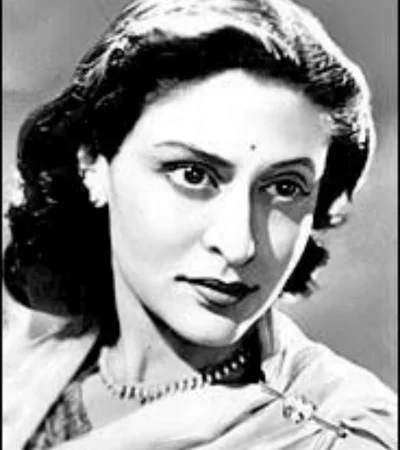
Early Life and Education
Kamala grew up in a traditional Indian family but had the opportunity to receive a good education. She attended the University of Madras, where she studied history. This education helped her understand the social and cultural changes happening in India, which she later depicted in her novels.
Career and Major Works
After her studies, Kamala worked as a journalist in India for a short time. In 1948, she moved to England, where she married an Englishman named Bertrand Taylor. This move to England gave her new experiences and perspectives that influenced her writing.
Her first novel, “Nectar in a Sieve,” was published in 1954 and became very popular. The story is about a poor Indian woman named Rukmani and her struggles with poverty and social changes. The novel highlights the hardships of farmers in India and how industrialization affects their lives. This book made Kamala famous and is still widely read today.
Kamala wrote several other novels, including “Some Inner Fury” (1955), “A Silence of Desire” (1960), and “The Coffer Dams” (1969). These books explore themes like the clash between traditional and modern ways of life, cultural conflicts, and human relationships. Her stories often show the strength and dignity of ordinary people facing difficult situations.
Legacy
Kamala Markandaya’s writing is known for its rich descriptions and deep understanding of her characters’ lives. She successfully introduced Western readers to Indian culture and society, making her an important figure in both Indian and British literature. Her novels have been translated into many languages, reaching readers all over the world.
Kamala Markandaya passed away on May 16, 2004, but her work continues to be appreciated for its powerful storytelling and timeless themes. She remains a celebrated author, known for her ability to convey the complexities of Indian life with empathy and insight.
In summary, Kamala Markandaya was a talented novelist and journalist who used her writing to highlight the challenges and resilience of Indian people. Her work remains influential and continues to touch the hearts of readers everywhere.
Related Article: What is the History of English Literature?
Development of English Literature in India
English literature in India has a rich history that spans over two centuries. It began during the British colonial period and has grown to become a significant part of Indian literature today. The development of English literature in India can be divided into several phases.
Early Beginnings
The roots of Indian English literature date back to the 19th century during British rule. Indian writers started using English as a medium to express their thoughts and experiences. One of the earliest known Indian writers in English was Henry Louis Vivian Derozio, a poet and teacher, who inspired many students to write in English. His poems often focused on social issues and patriotism.
The Rise of the Indian Novel
In the late 19th and early 20th centuries, Indian writers began exploring the novel as a literary form. Bankim Chandra Chattopadhyay’s “Rajmohan’s Wife” (1864) is considered one of the first Indian novels written in English. This period also saw the emergence of writers like Rabindranath Tagore, who wrote poetry and prose in both Bengali and English. Tagore won the Nobel Prize in Literature in 1913, bringing international recognition to Indian literature.
The Post-Independence Era
After India gained independence in 1947, there was a significant rise in the number of Indian writers writing in English. This period is marked by the works of R.K. Narayan, Mulk Raj Anand, and Raja Rao. These writers depicted Indian life and culture in their novels, bringing the everyday experiences of Indians to a global audience. R.K. Narayan’s “Malgudi Days” and Mulk Raj Anand’s “Untouchable” are notable examples from this era.
Modern and Contemporary Literature
In the latter half of the 20th century and into the 21st century, Indian English literature has continued to flourish. Writers like Salman Rushdie, Arundhati Roy, and Vikram Seth have gained international acclaim. Salman Rushdie’s “Midnight’s Children” won the Booker Prize in 1981 and is considered a landmark in Indian English literature. Arundhati Roy’s “The God of Small Things” won the Booker Prize in 1997, further highlighting the global impact of Indian writers.
Themes and Styles
Indian English literature covers a wide range of themes, including social and political issues, cultural conflicts, and personal experiences. It reflects the diversity of Indian society and often addresses the challenges of modernity and tradition. The writing styles are equally diverse, from the magical realism of Salman Rushdie to the lyrical prose of Arundhati Roy.
Conclusion
The development of English literature in India is a testament to the country’s rich cultural heritage and its ability to adapt and innovate. From its early beginnings during the colonial period to its current global presence, Indian English literature continues to evolve and captivate readers around the world. It serves as a bridge between the East and the West, offering a unique perspective on Indian life and thought.

